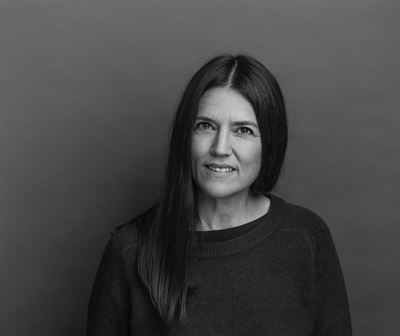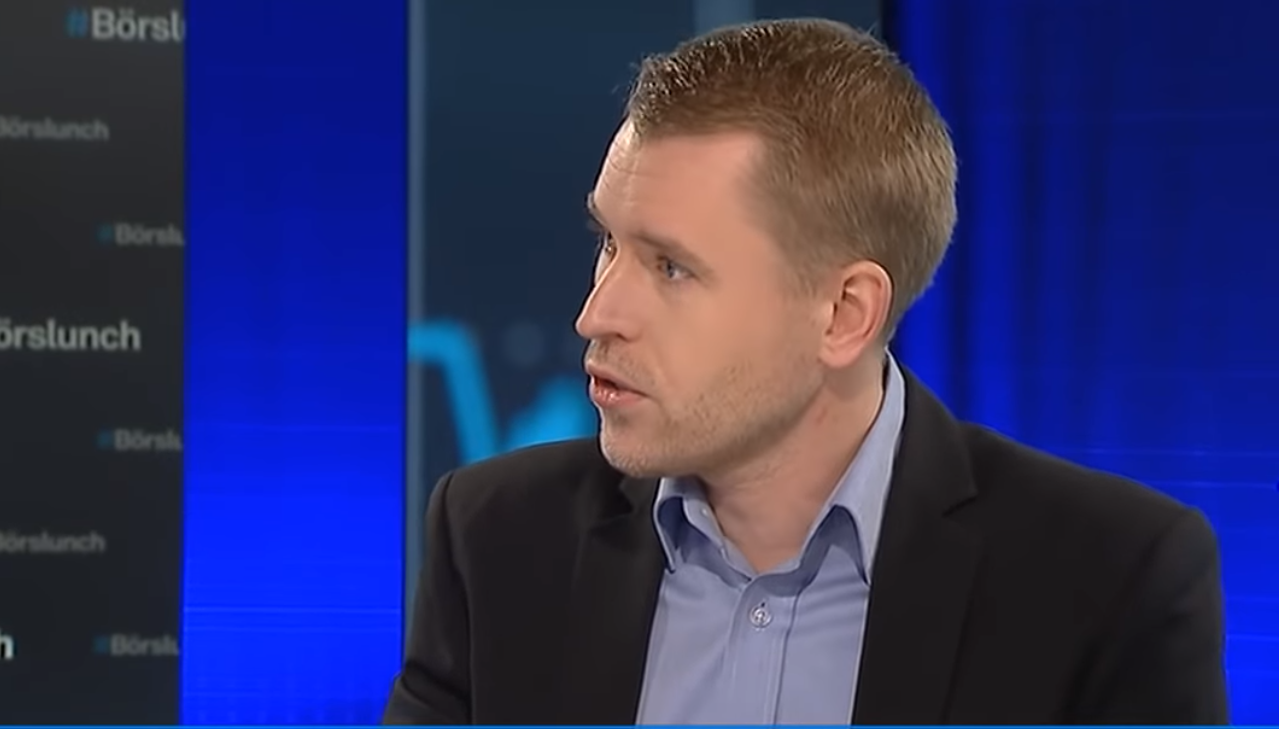Marknadsnyheter
Calquence plus chemoimmunotherapy reduced the risk of disease progression or death by 27% vs. standard of care in patients with untreated mantle cell lymphoma in ECHO Phase III trial
First and only BTK inhibitor to demonstrate favourable overall survival trend vs. standard-of-care chemoimmunotherapy in this setting.
Positive results from the ECHO Phase III trial showed AstraZeneca’s Calquence (acalabrutinib) in combination with bendamustine and rituximab demonstrated a statistically significant and clinically meaningful improvement in progression-free survival (PFS) and showed a favourable trend in overall survival (OS) compared to standard-of-care chemoimmunotherapy (bendamustine plus rituximab) in previously untreated patients with mantle cell lymphoma (MCL).
These results will be presented today in a late-breaking oral presentation at the European Hematology Association (EHA) 2024 Hybrid Congress in Madrid, Spain (#LBA3439).
Results showed the Calquence combination regimen reduced the risk of disease progression or death by 27% compared to standard-of-care chemoimmunotherapy (hazard ratio [HR] 0.73; 95% confidence interval [CI] 0.57-0.94; p=0.016). Median PFS was 66.4 months for patients treated with the Calquence combination (n=299) versus 49.6 months with standard-of-care chemoimmunotherapy (n=299).
The secondary endpoint of OS showed a favourable trend for the Calquence combination compared to standard-of-care chemoimmunotherapy, further supporting the clinical benefit of this combination (HR 0.86; 95% CI 0.65-1.13; p=0.2743). The OS data were not mature at the time of this analysis and the trial will continue to assess OS as a key secondary endpoint.
The ECHO trial enrolled during the pandemic period, and a pre-specified analysis censoring for COVID-19-related deaths was conducted to assess the impact. PFS was further improved in both arms, with the Calquence combination reducing the risk of disease progression or death by 36% (HR 0.64; 95% CI; 0.48-0.84; p=0.0017). Median PFS was not reached among patients treated with the Calquence combination versus 61.6 months for standard-of-care chemoimmunotherapy (HR 0.64, 95% CI, 0.48-0.84; p=0.0017). A favourable trend was seen for OS in this analysis for the Calquence combination (HR 0.75; 95% CI 0.53-1.04; p=0.0797).
Michael Wang, MD, Puddin Clarke Endowed Professor, Director of Mantle Cell Lymphoma Program of Excellence, Co-Director of Clinical Trials at MD Anderson Cancer Center in Houston, US and principal investigator in the trial, said: ”For people living with mantle cell lymphoma, a typically aggressive form of non-Hodgkin’s lymphoma, the ECHO results offer promise of a new, effective treatment option for adults older than 65, who represent the majority of MCL patients. The improved progression-free survival seen in patients treated with the Calquence combination compared to chemoimmunotherapy demonstrate its potential to change the standard of care as the only BTK inhibitor in this first-line setting.”
Susan Galbraith, Executive Vice President, Oncology R&D, AstraZeneca, said: “The ECHO trial data demonstrate important progress in improving outcomes for patients with mantle cell lymphoma. The 16.8 months of additional time patients can live without their disease progressing is highly clinically meaningful, together with a trend to improvement in overall survival. We therefore believe Calquence plus chemoimmunotherapy will be an important new option for patients living with this disease.”
Summary of Results: ECHO
| Calquence plus bendamustine and rituximab(n = 299) | Placebo plus bendamustine and rituximab(n = 299) | |
| Median PFS(months) | 66.4 | 49.6 |
| PFS HR (95% CI) | 0.73 (0.57-0.94) | |
| PFS p-value | 0.0160 | |
| OS HR (95% CI) | 0.86 (0.65-1.13) | |
| OS p-value | 0.2743 | |
| Censoring for COVID-19 deaths | ||
| Median PFS | NR | 61.6 |
| PFS HR (95% CI) | 0.64 (0.48-0.84) | |
| PFS p-value | 0.0017 | |
| OS HR (95% CI) | 0.75 (0.53-1.04) | |
| OS p-value | 0.0797 | |
NR=Not reached
The safety and tolerability of Calquence was consistent with its known safety profile, and no new safety signals were identified. Grade 3 or higher adverse events (AEs) due to any cause occurred in 88.9% (n=264) of patients treated with the Calquence combination and 88.2% (n=262) of patients treated with standard-of-care chemoimmunotherapy, including Grade 3 or higher atrial fibrillation in 3.7% (n=11) and 1.7% (n=5) of patients, Grade 3 or higher hypertension in 5.4% (n=16) and 8.4% (n=25), Grade 3 or higher major bleeding in 2.0% (n=6) and 3.4% (n=10), and Grade 3 or higher infections in 41.1% (n=122) and 34.0% (n=101), respectively. Serious AEs and Grade 5 events were balanced across arms (69% [n=205] versus 62% [n=184], and 12.1% [n=36] versus 10.1% [n=30], respectively). AEs leading to discontinuation were observed in 10.4% (n=31) and 6.4% (n=19) of patients for the Calquence combination and placebo arms respectively. AEs related to COVID-19 were seen in the trial, including Grade 5 events which occurred in 9.4% (n=28) of patients treated with the Calquence combination and 6.7% (n=20) of patients treated with standard-of-care chemoimmunotherapy.
Additional AstraZeneca data at EHA
In addition to these compelling data, AstraZeneca data at EHA 2024 shows how the Company is advancing a diverse and innovative pipeline spanning multiple modalities including next-generation T cell engagers, cell therapy and antibody drug conjugates, to enable the creation of novel combination regimens across a range of blood cancers.
Results from the ongoing Phase I, dose-escalation trial of AZD0486, a novel CD19xCD3 T cell engager, showed durable responses in patients with heavily pretreated relapsed/refractory follicular lymphoma with a median follow up of 11 months. Complete response rates of 84% were seen at doses of AZD0486 of 2.4 mg and above. Data also showed how cytokine release syndrome (CRS) events were effectively mitigated by the double step-up dosing schedule and no immune effector cell-associated neurotoxicity syndrome (ICANS) events were observed.
In an oral presentation, preliminary data was shared from an investigator-initiated trial of AstraZeneca’s first haematology cell therapy, GC012F (AZD0120), in patients with transplant-eligible high-risk, newly diagnosed multiple myeloma. Early results showed that GC012F had an overall response rate of 100%, a minimal residual disease-negative stringent complete response rate of 95%, and was well tolerated. Grade 1-2 CRS was experienced by 27% (6/22) of patients and no ICANS or neurotoxicity was observed. GC012F is a novel BCMAxCD19 dual-targeting autologous chimeric antigen receptor T therapy (CAR-T) created using the next-day FasTCAR manufacturing platform pioneered by Gracell Biotechnologies, a wholly owned subsidiary of AstraZeneca.
Notes
Mantle cell lymphoma
MCL is a rare and typically aggressive form of non-Hodgkin lymphoma (NHL), often diagnosed as a late-stage disease, resulting when B-lymphocytes mutate into malignant cells within a region of the lymph node known as the mantle zone.1,2 While MCL patients initially respond to treatment, patients do tend to relapse.3 MCL comprises about 3-6% of non-Hodgkin lymphomas, with an annual incidence of 0.5 per 100,000 population in Western countries; in the US, it is estimated that approximately 4,000 new patients are diagnosed with MCL each year.3,4 It is estimated that there are more than 27,500 people living with MCL worldwide.5,6
ECHO
ECHO is a randomised, double-blind, placebo-controlled, multi-centre Phase III trial evaluating the efficacy and safety of Calquence plus bendamustine and rituximab compared to standard of care chemoimmunotherapy (bendamustine and rituximab) in adult patients at or over 65 years of age (n=635) with previously untreated MCL.7 Patients were randomised 1:1 to receive either Calquence or placebo administered orally twice per day, on 28 day treatment cycles, plus bendamustine on days 1 and 2 and rituximab on day 1 of each cycle. After six cycles of induction therapy, all patients continued Calquence or placebo in combination with bendamustine and rituximab, patients receive Calquence or placebo plus maintenance rituximab for two years and then either Calquence or placebo only until disease progression.7
The primary endpoint is PFS assessed by an Independent Review Committee and key secondary endpoints include OS, overall response rate (ORR), duration of response (DoR) and time to response (TTR).7 The trial includes 27 countries across North and South America, Europe, Asia and Oceania.7
The ECHO trial enrolled patients from May 2017 to March 2023, continuing through the COVID-19 pandemic. Patients with blood cancer remain at a disproportionately high risk of severe outcomes from COVID-19, including hospitalisation and death compared to the general population.8
Calquence
Calquence (acalabrutinib) is a next-generation, selective inhibitor of Bruton’s tyrosine kinase (BTK). Calquence binds covalently to BTK, thereby inhibiting its activity.9 In B-cells, BTK signalling results in activation of pathways necessary for B-cell proliferation, trafficking, chemotaxis and adhesion.
Calquence has been used to treat more than 80,000 patients worldwide and is approved for the treatment of CLL and small lymphocytic lymphoma (SLL) in the US and Japan, approved for CLL in the EU and many other countries worldwide and approved in China for relapsed or refractory CLL and SLL. Calquence is also approved in the US, China and several other countries for the treatment of adult patients with MCL who have received at least one prior therapy. Calquence is not currently approved for the treatment of MCL in Japan or the EU.
As part of an extensive clinical development programme, Calquence is currently being evaluated as a single treatment and in combination with standard-of-care chemoimmunotherapy for patients with multiple B-cell blood cancers, including CLL, MCL, diffuse large B-cell lymphoma and follicular lymphoma.
AstraZeneca in haematology
AstraZeneca is pushing the boundaries of science to redefine care in haematology. Our goal is to help transform the lives of patients living with malignant, rare and other related haematologic diseases through innovative medicines and approaches that are shaped by insights from patients, caregivers and physicians.
In addition to our marketed products, we are spearheading the development of novel therapies designed to target underlying drivers of disease across six scientific platforms. Our recent acquisitions of Alexion, with expertise in rare, non-malignant blood disorders, and Gracell Biotechnologies Inc., focused on cell therapies for haematologic malignancies, expand our haematology pipeline and enable us to reach more patients with high unmet needs through the end-to-end development and delivery of novel therapies.
AstraZeneca in oncology
AstraZeneca is leading a revolution in oncology with the ambition to provide cures for cancer in every form, following the science to understand cancer and all its complexities to discover, develop and deliver life-changing medicines to patients.
The Company’s focus is on some of the most challenging cancers. It is through persistent innovation that AstraZeneca has built one of the most diverse portfolios and pipelines in the industry, with the potential to catalyse changes in the practice of medicine and transform the patient experience.
AstraZeneca has the vision to redefine cancer care and, one day, eliminate cancer as a cause of death.
AstraZeneca
AstraZeneca (LSE/STO/Nasdaq: AZN) is a global, science-led biopharmaceutical company that focuses on the discovery, development, and commercialisation of prescription medicines in Oncology, Rare Diseases, and BioPharmaceuticals, including Cardiovascular, Renal & Metabolism, and Respiratory & Immunology. Based in Cambridge, UK, AstraZeneca’s innovative medicines are sold in more than 125 countries and used by millions of patients worldwide. Please visit astrazeneca.com and follow the Company on social media @AstraZeneca.
Contacts
For details on how to contact the Investor Relations Team, please click here. For Media contacts, click here.
References
- Lymphoma Research Foundation. Mantle Cell Lymphoma. Available at: https://lymphoma.org/aboutlymphoma/nhl/mcl/. Accessed May 2024.
- National Organization for Rare Disorders. Mantle Cell Lymphoma. Available at: https://rarediseases.org/rare-diseases/mantle-cell-lymphoma/. Accessed May 2024.
- Cheah C, Seymour J, Wang ML. Mantle cell lymphoma. J Clin Oncol. 2016;34(11):1256-1269. doi: 10.1200/JCO.2015.63.5904.
- MD Anderson Cancer Center. What to know about mantle cell lymphoma. Available at: https://www.mdanderson.org/cancerwise/what-to-know-about-mantle-cell-lymphoma-symptoms-diagnosis-and-treatment.h00-159385101.html. Accessed May 2024.
- GLOBOCAN. Non-Hodgkin Lymphoma. Available at: https://gco.iarc.who.int/media/globocan/factsheets/cancers/34-non-hodgkin-lymphoma-fact-sheet.pdf. Accessed May 2024.
- Lynch DT, Koya S, Acharya U, et al. Mantle Cell Lymphoma. Available at: https://www.ncbi.nlm.nih.gov/books/NBK536985/. Accessed May 2024.
- ClinicalTrials.gov. A Study of BR Alone Versus in Combination With Acalabrutinib in Subjects With Previously Untreated MCL. Available at: https://clinicaltrials.gov/study/NCT02972840. Accessed May 2024.
- Dube S, et al. Continued Increased Risk of COVID-19 Hospitalisation and Death in Immunocompromised Individuals Despite Receipt of ≥4 Vaccine Doses: Updated 2023 Results from INFORM, a Retrospective Health Database Study in England. Poster P0409 at ECCMID 2024.
- Wu J, Zhang M, Liu D. Acalabrutinib (ACP-196): a selective second-generation BTK inhibitor. J Hematol Oncol. 2016;9(21).
Marknadsnyheter
Regeringen föreslår lättnader i byggkraven för studentbostäder
Regeringen har beslutat om en lagrådsremiss med förslag till lättnader i byggkraven för studentbostäder. Syftet är att öka möjligheterna till flexibilitet vid byggandet.
– På många studieorter är det svårt för studenter att hitta boende. Därför behöver byggregelverket förenklas. Syftet är att möjliggöra för fler studentbostäder genom sänkta byggkostnader och ökad flexibilitet, säger infrastruktur- och bostadsminister Andreas Carlson.
Förslaget innebär att det blir möjligt att göra undantag från kraven på tillgänglighet och användbarhet i en byggnad som innehåller studentbostäder. Undantagen ska kunna tillämpas vid både nyproduktion och vid ändring av en byggnad.
Det ska vara möjligt att göra undantag för högst 80 procent av studentbostäderna i ett byggprojekt. Minst 20 procent av studentbostäderna ska fortfarande uppfylla gällande krav på tillgänglighet och användbarhet för personer med nedsatt rörelse- eller orienteringsförmåga.
Lagändringen ger större flexibilitet vid byggande av studentbostäder och skapar fler tänkbara sätt att utforma planlösningar. Till exempel kan bostadsytan minskas och fler bostäder rymmas inom en given yta.
De föreslagna undantagen ska inte hindra personer med funktionsnedsättning att vara delaktiga i sociala sammanhang. En studentbostad som omfattas av undantagen ska kunna besökas av en person med nedsatt rörelse- eller orienteringsförmåga.
Regeringen breddar också definitionen av studentbostäder till att inkludera all vuxenutbildning för att göra det möjligt för fler kommuner att erbjuda studentbostäder.
Förslagen föreslås träda i kraft den 1 juli 2025.
Lagrådsremissen: Lättnader i byggkraven för studentbostäder – Regeringen.se
Presskontakt
Ebba Gustavsson
Pressekreterare hos infrastruktur- och bostadsminister Andreas Carlson
Telefon (växel) 08-405 10 00
Mobil 076-12 70 488
ebba.gustavsson@regeringskansliet.se
Marknadsnyheter
“Vi behöver tillsammans enas om vettiga avtal, som sätter standard för branschen”


Sveriges Radios Kulturnytt gör just nu en mycket välkommen granskning av villkoren i musikbranschen. Igår lyftes artisten Siw Malmkvists situation med ett avtal som inte förnyats på över 60 år. Hennes situation är tyvärr långt ifrån unik. Musikerförbundet har länge uppmärksammat att majorbolagen fortsätter att betala extremt låga royaltynivåer till artister vars kontrakt skrevs på 1960-talet – en tid då digital streaming inte existerade.
– Jag kan intyga att artisterna som talar ut i P1 är långt ifrån ensamma om sin situation och vi uppmanar deras artistkollegor att gå ut med sitt tydliga stöd till de som vågar bryta tystnaden om oskäliga ersättningar, säger Musikerförbundets ordförande Karin Inde.
Musiker och artister skapar det värde som skivbolagen tjänar pengar på, men ändå ser vi gång på gång hur bolagen behåller stora delar av intäkterna. Att en av Sveriges mest folkkära artister, med en karriär som sträcker sig över decennier, fortfarande har en oskälig royalty är ett tydligt bevis på branschens obalans.
– Tystnadskulturen kring prissättning är enbart bra för bolagen. Både artister och musiker skulle verkligen tjäna på att dela med sig till varandra om hur betalningar och dealar verkligen ser ut. Förstås i trygga, egna rum. Det är bara bolagen som tjänar på att vi inte pratar med varandra om pengar, säger Karin Inde.
Stort tack till de modiga artister som ser till att lyfta problematiken! För att vi ska få till en i grunden mer rättvis musikbransch behöver de stora parterna i sammanhanget – skivbolagen, musikerna och artisterna – göra som de flesta andra svenska branscher lyckas med:
– Vi behöver tillsammans enas om vettiga och balanserade avtal, som sätter standard för branschen. Musikerförbundet är redo att göra vår del i arbetet för bättre villkor i musikbranschen, frågan är om skivbolagen är redo, säger Karin Inde.
Karin Inde
Förbundsordförande
karin.inde@musikerforbundet.se
+46 (0)704447228
Musikerförbundet är fackförbundet för professionella musiker och artister. Vi arbetar för förbättrade upphovsrättsliga och arbetsrättsliga villkor och för att våra medlemmar ska få en rättvis del av de värden de skapar i samhället.
Marknadsnyheter
Bönor från egen kaffeskog, sump till jord – Viking Lines nya kaffe gör gott på många olika sätt


Viking Lines resenärer dricker varje år 8,5 miljoner koppar kaffe. Nu satsar rederiet på ett helt nytt kaffe som ger minskade klimatutsläpp och bättre levnadsvillkor för odlarna. Kaffet från Slow Forest odlas på rederiets egen odling i Laos utan kemiska gödningsmedel, handplockas och rostas därefter i Danmark.
Allt kaffe som serveras på Viking Lines fartyg är nu hållbart producerat Slow Forest-kaffe, odlat på rederiets 75 hektar stora odling på högplatåerna i Laos och rostat i Danmark. Kaffeplantorna odlas bland träd på återbeskogad mark, i stället för på traditionellt skövlade plantager. Viking Lines odling ligger i en kolsänka där målsättningen är att plantera 30 000 träd, vilket innebär nästan 400 träd per hektar. Kaffeskogen förbättrar också den lokala biologiska mångfalden i området.
Odlingen, bearbetningen och rostningen av kaffet hanteras av Slow Forest Coffee. För företaget är det viktigt att produktionskedjan är rättvis och transparent. Utöver miljöfördelarna erbjuder Slow Forest bättre lönevillkor och sjukersättning för byns odlare.
”Den traditionella kaffetillverkningens koldioxidavtryck är stort och merparten av intäkterna går till Europa i stället för produktionsländerna. Vi ville göra annorlunda. Våra kunder vill göra hållbara val, och nu kan de njuta av sitt kaffe med bättre samvete än någonsin tidigare,” berättar Viking Lines restaurangchef Janne Lindholm.
Bönorna till Slow Forest-kaffet får sakta mogna i skuggan av träden, utan kemiska gödningsmedel. De plockas också för hand, vilket avsevärt förbättrar kaffets kvalitet och smak. Viking Lines nya kaffe består till 100 procent av Arabica-bönor, med en balanserad syrlighet samt smak av nötter och choklad. Rostningsprofilen har skapats av den världsberömda danska rostningsmästaren Michael de Renouard.
”Vi valde en mörkrost till fartygets kaffe, vilket passar både finländarnas och svenskarnas nuvarande smakpreferenser gällande rostning. Finländarnas smak gällande kaffe har under de senaste åren utvecklats mot en mörkare rostning. Innan vi gjorde vårt slutgiltiga val testades det nya kaffet i Viking Cinderellas bufférestaurang och personalmässen – och båda testgrupperna gav toppbetyg. Då 8,5 miljoner koppar kaffe bryggs varje år kan inget lämnas åt slumpen!” säger Janne Lindholm.
Viking Lines hållbarhetsmål stannar inte vid produktionskedjan. Kaffesump från fartygen återvinns nämligen som råmaterial för trädgårdsjord. Detta minskar avsevärt användningen av jungfrulig torv vid tillverkningen av mylla.
”Vi har som mål att allt som tagits ombord på fartygen som är möjligt att återvinna ska återanvändas eller återvinnas. Det gäller inte bara kaffet utan även matavfall och till exempel textilier som tas ur bruk. Ett bra exempel på vårt livscykeltänkande är att frityrolja från fartygets restauranger blir till biobränsle för den finska sjöfartsindustrin,” säger Viking Lines hållbarhetschef Dani Lindberg.
Slow Forest Coffee – 5 fakta:
- Slow Forest Coffee är ett kaffeföretag som verkar i Laos, Vietnam och Indonesien i samarbete med över 500 lokala kaffeodlare.
- Företaget grundades år 2019 av Pinja Puustjärvi, driven av en vilja att skydda skogarna i Laos och stötta lokala odlare. Puustjärvi bodde som barn i Laos på grund av sin fars arbete.
- Kaffet odlas i restaurerade kaffeskogar, som binder stora mängder kol och ökar den biologiska mångfalden.
- Det är viktigt för företaget att produktionskedjan är ansvarsfull och transparent, samt att verksamheten gynnar både miljön och de lokala samhällena.
- Slow Forest Coffee betalar odlarna bättre ersättning än genomsnittet i Laos och erbjuder förmåner som underlättar deras liv: förskottsbetalningar, utbildning och möjligheten att låna pengar från en krisfond.
Mera infomation om Slow Forest Coffee här
Tilläggsinformation:
Janne Lindholm, restaurangchef
janne.lindholm@vikingline.com, tel. +358 400 744 806
Dani Lindberg, hållbarhetschef
dani.lindberg@vikingline.com, tel. +358 18 27 000
Johanna Boijer-Svahnström, informationsdirektör
johanna.boijer@vikingline.com, tel. +358 18 270 00
Christa Grönlund, informationschef
christa.gronlund@vikingline.com, tel. +358 9 123 51
-
Analys från DailyFX10 år ago
EUR/USD Flirts with Monthly Close Under 30 Year Trendline
-
Marknadsnyheter5 år ago
BrainCool AB (publ): erhåller bidrag (grant) om 0,9 MSEK från Vinnova för bolagets projekt inom behandling av covid-19 patienter med hög feber
-

 Marknadsnyheter2 år ago
Marknadsnyheter2 år agoUpptäck de bästa verktygen för att analysera Bitcoin!
-
Analys från DailyFX12 år ago
Japanese Yen Breakout or Fakeout? ZAR/JPY May Provide the Answer
-

 Marknadsnyheter2 år ago
Marknadsnyheter2 år agoDärför föredrar svenska spelare att spela via mobiltelefonen
-
Analys från DailyFX12 år ago
Price & Time: Key Levels to Watch in the Aftermath of NFP
-
Analys från DailyFX8 år ago
Gold Prices Falter at Resistance: Is the Bullish Run Finished?
-

 Nyheter7 år ago
Nyheter7 år agoTeknisk analys med Martin Hallström och Nils Brobacke

